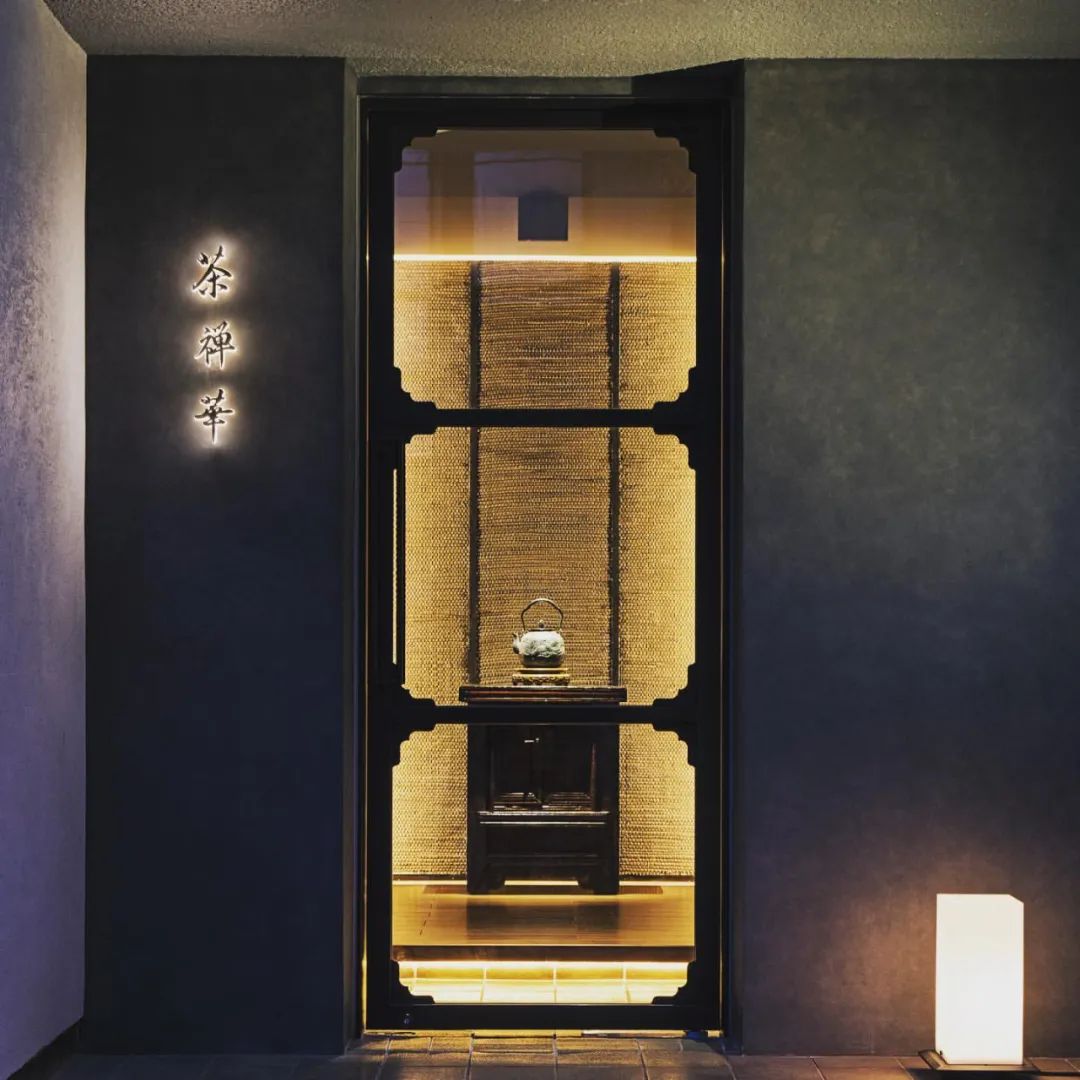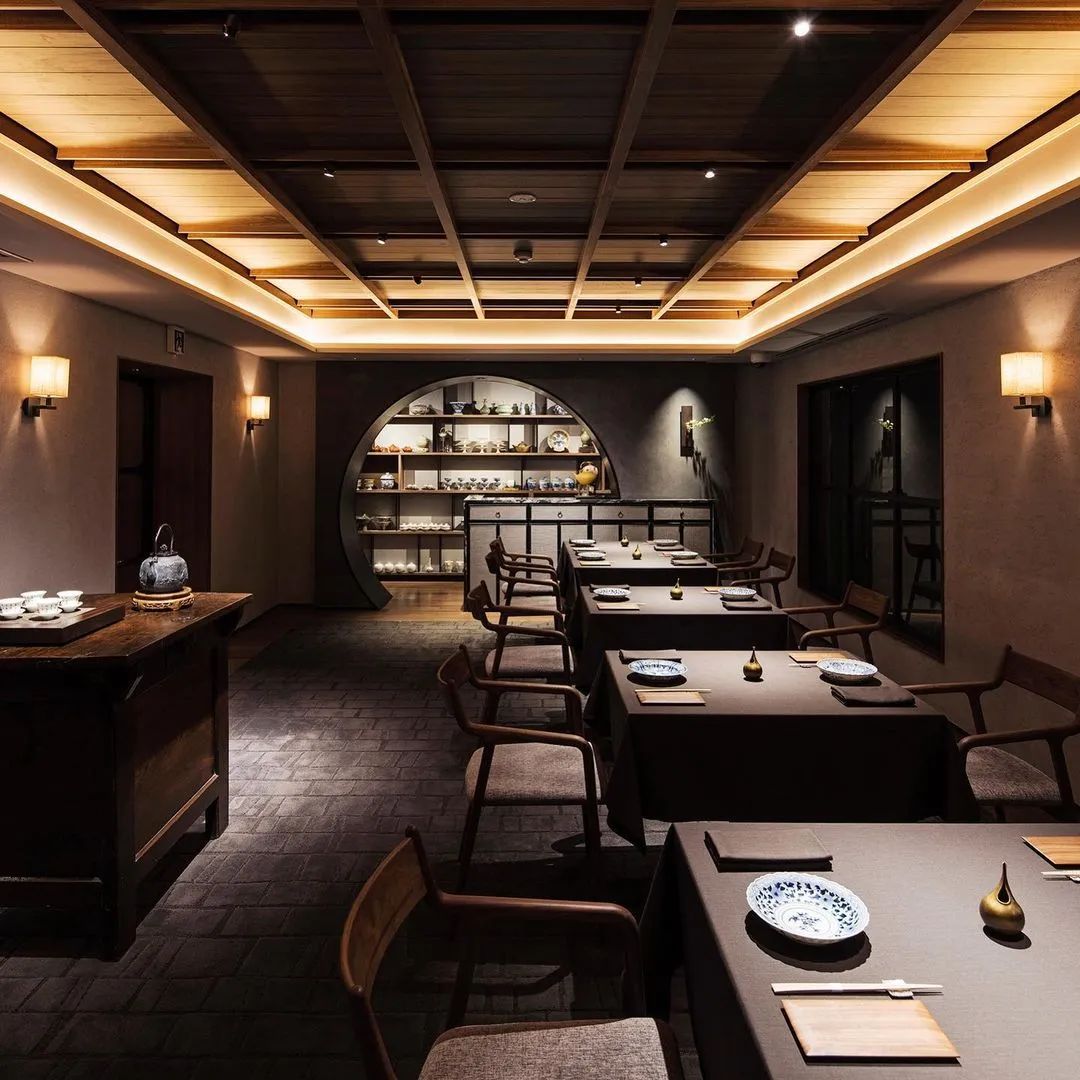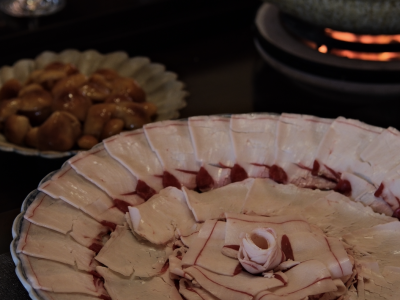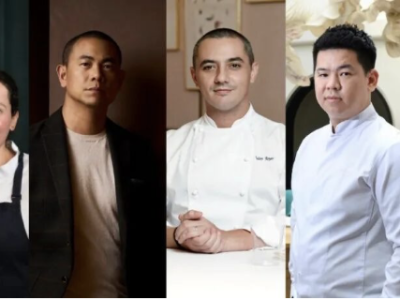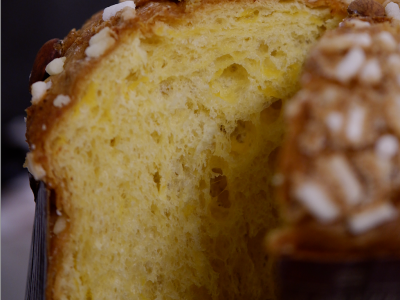Chef Kawada cooks refined Chinese cuisine infused with a Japanese sensibility, boasting superb grilling techniques and a wide array of creative flavours. Although he bases his dishes on a Japanese palate, good food is good food no matter where it comes from. The meal left us in awe: dishes came like a whirlwind of highlights and culminated one after another as if accompanied by music from the Cooking Master Boy in the background. Satisfied as I was, we were truly amazed by how a Japanese chef managed to cook Chinese food so well.
This November, a crab feast was presented at Sazenka. Once seated, a pale green envelope carefully wrapped inside a menu in Chinese, together with a card that wrote Chef Kawada's most notable philosophies: Wakon-Kansai, a phrase originates from the Heian period (794~1185, Heian means “peace” in Japanese) according to Chef Kawada, meaning using Chinese culinary technique to present Japanese ingredients so as to achieve a state of harmony; Sazen-Ichimi, which describes oneness of tea (“sa”) and Zen (deep meditation), is used to convey that while the process may be different, what is imagined by tea and Zen is the same –to connect one’s body with mind; Shinmi-tada-kore-Tannari is part of a life philosophy quotation from Caigentan (or “Cabbage Roots Talk”, a popular book of Confucianism by a Chinese scholar in Ming Dynasty) – Good wine and savoury food are not natural taste, but blandness is; geniuses and supermen are not of perfect virtue, but the common is. Chef Kawada finds the first half of the sentence echoed his culinary philosophy: true flavour is found in the lightness of taste, not in excessive flavouring.
The first course was a bowl of somen noodles in a clear soup drizzled with a few drops of tea oil, an oriental, tea-themed start to warm the stomach. Next was Golden Century Egg deconstructed into three layers: center egg yolk, outer egg yolk with soya milk, and crystal clear egg white. This way of handling the century egg could help more people understand this Chinese fare.
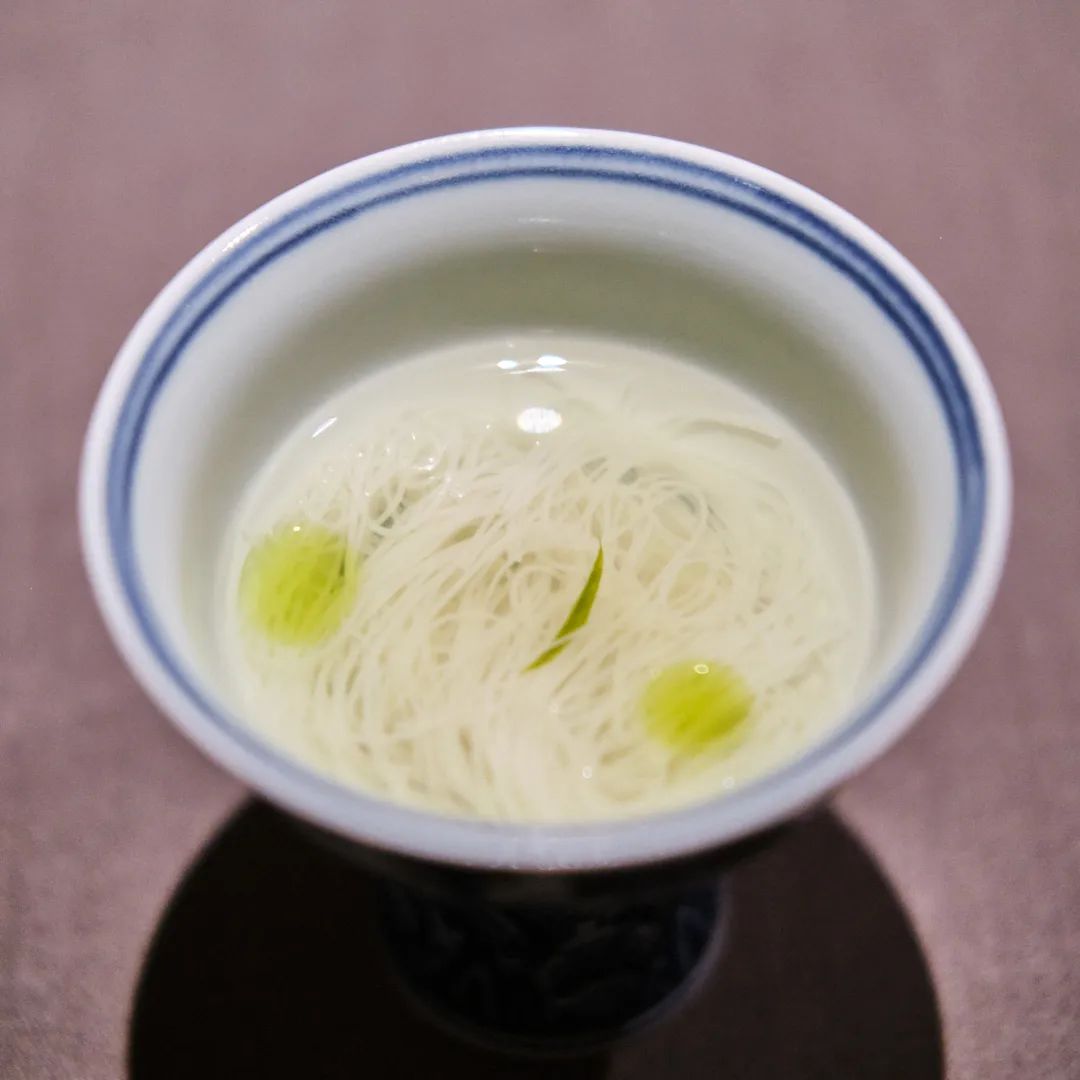
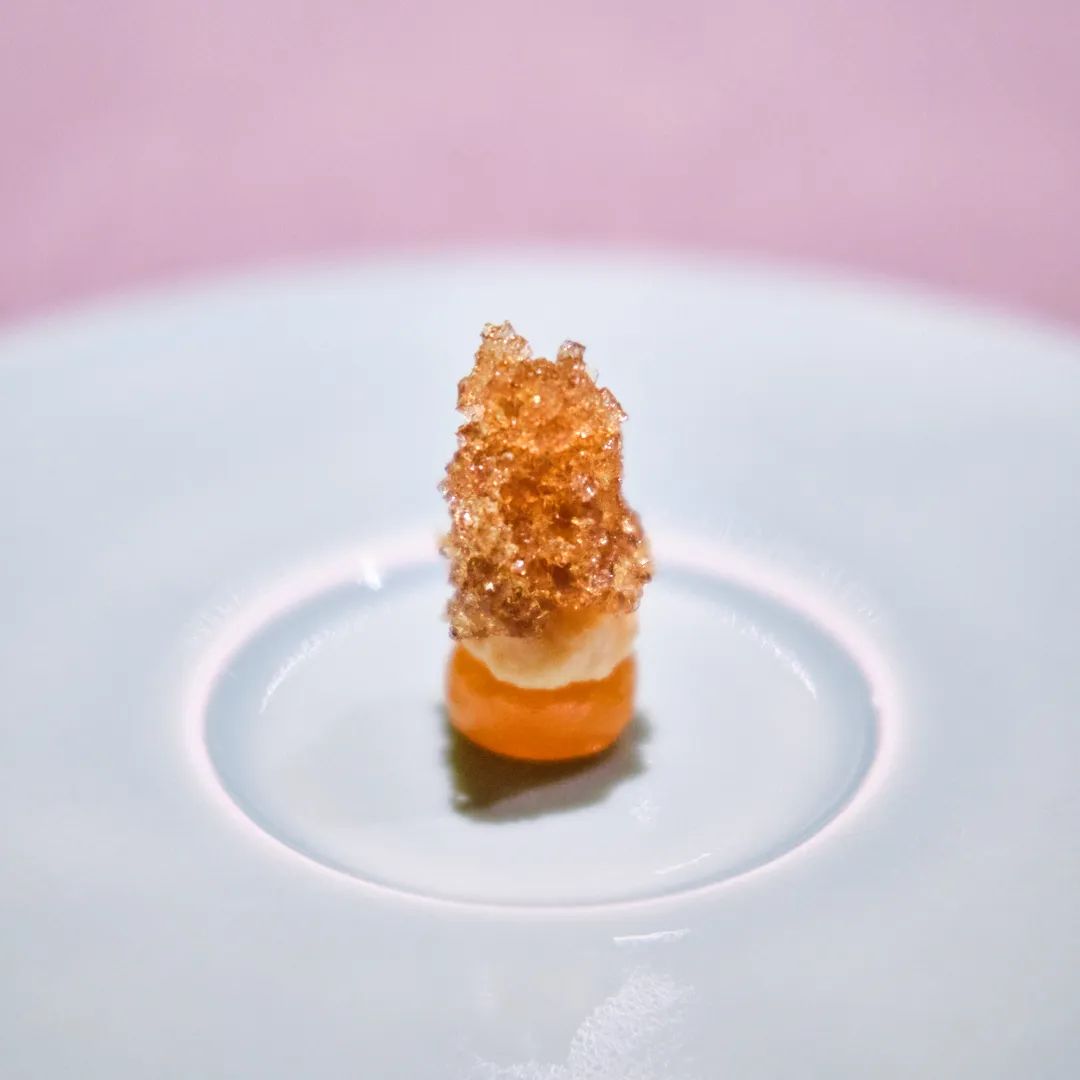
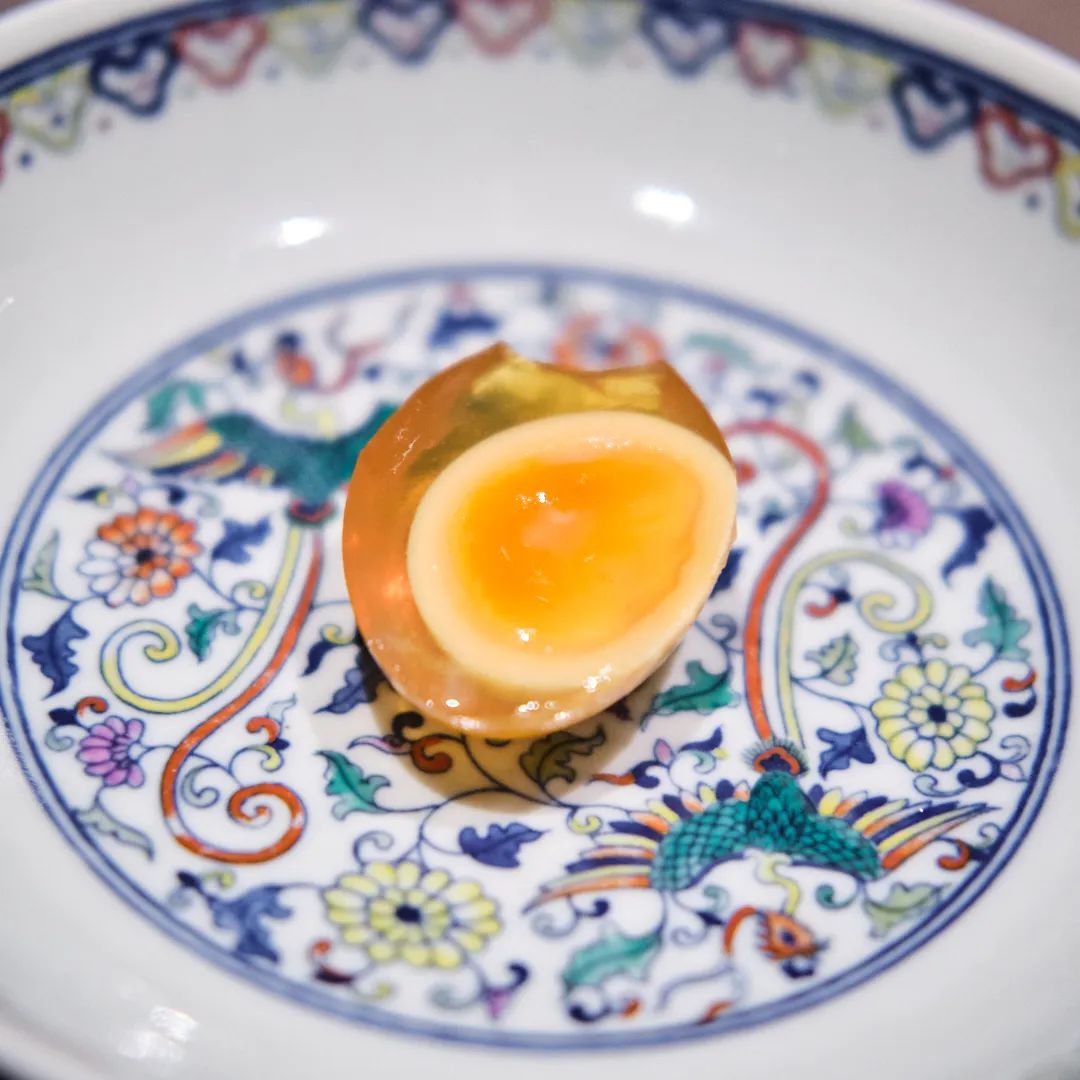
The Steamed Hairy Crab Roe with Fried Wonton was served with a spoonful of male crab roe and another of female crab roe placed in the steamer. The female crab roe was layered and fuller, while the male crab roe was soft and creamier. The crispy fried wonton was richly stuffed with luscious crab roe that overflowed in the mouth with heavenly sounds.
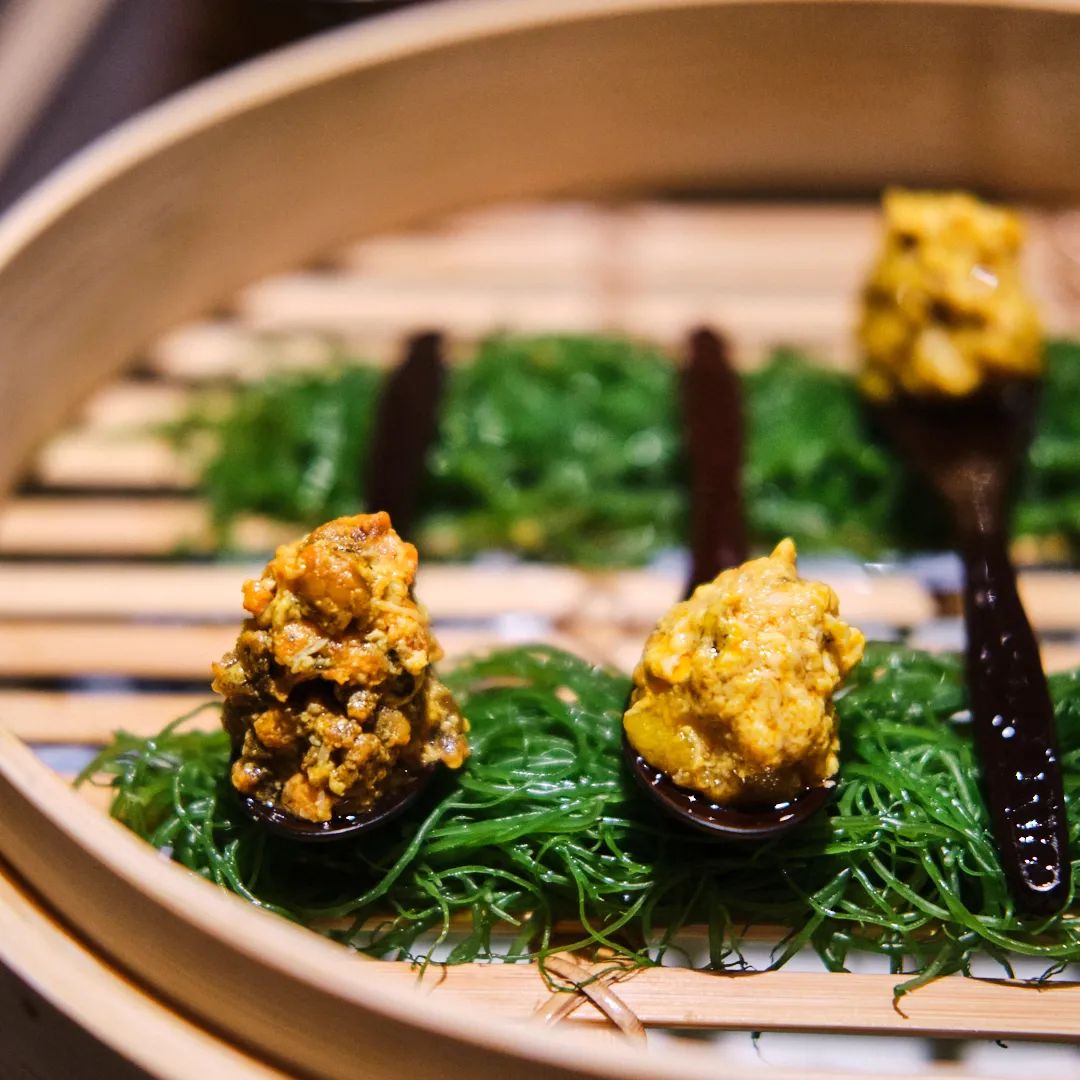
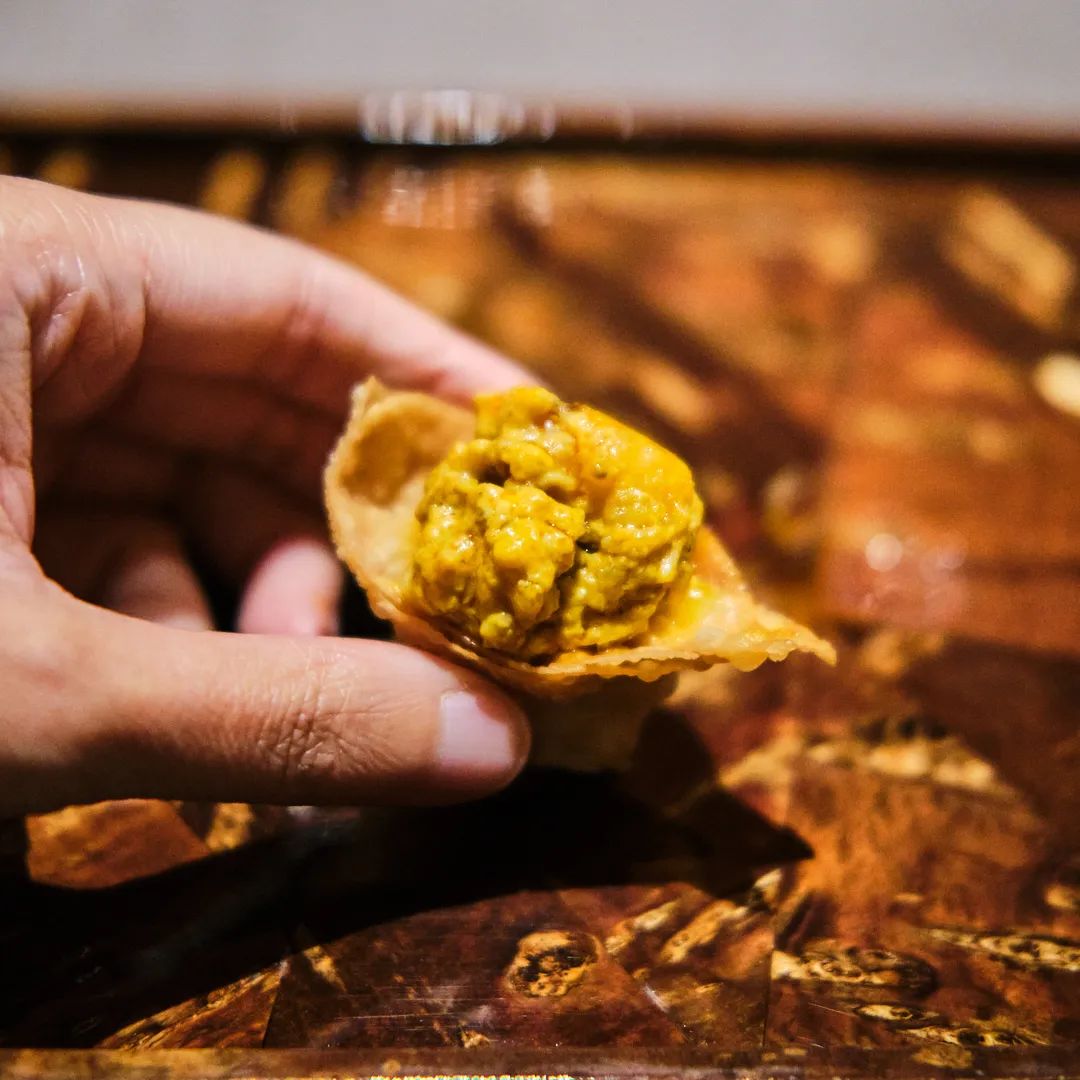
The finest ingredients are often prepared in the simplest way. The raw marinated hairy crab was served with half of a male and half of a female crab for comparison of the different crab roe. Sazenka sources quality hairy crabs from China to raw marinate them in Shaoxing wine, simple but with such premium quality and perfect cooking, it was almost the best hairy crab I have ever tasted. The next two spoonfuls of male and female crab claw meat soundly brought you back to the original sweetness of the crab meat and also served as a palate cleanser.
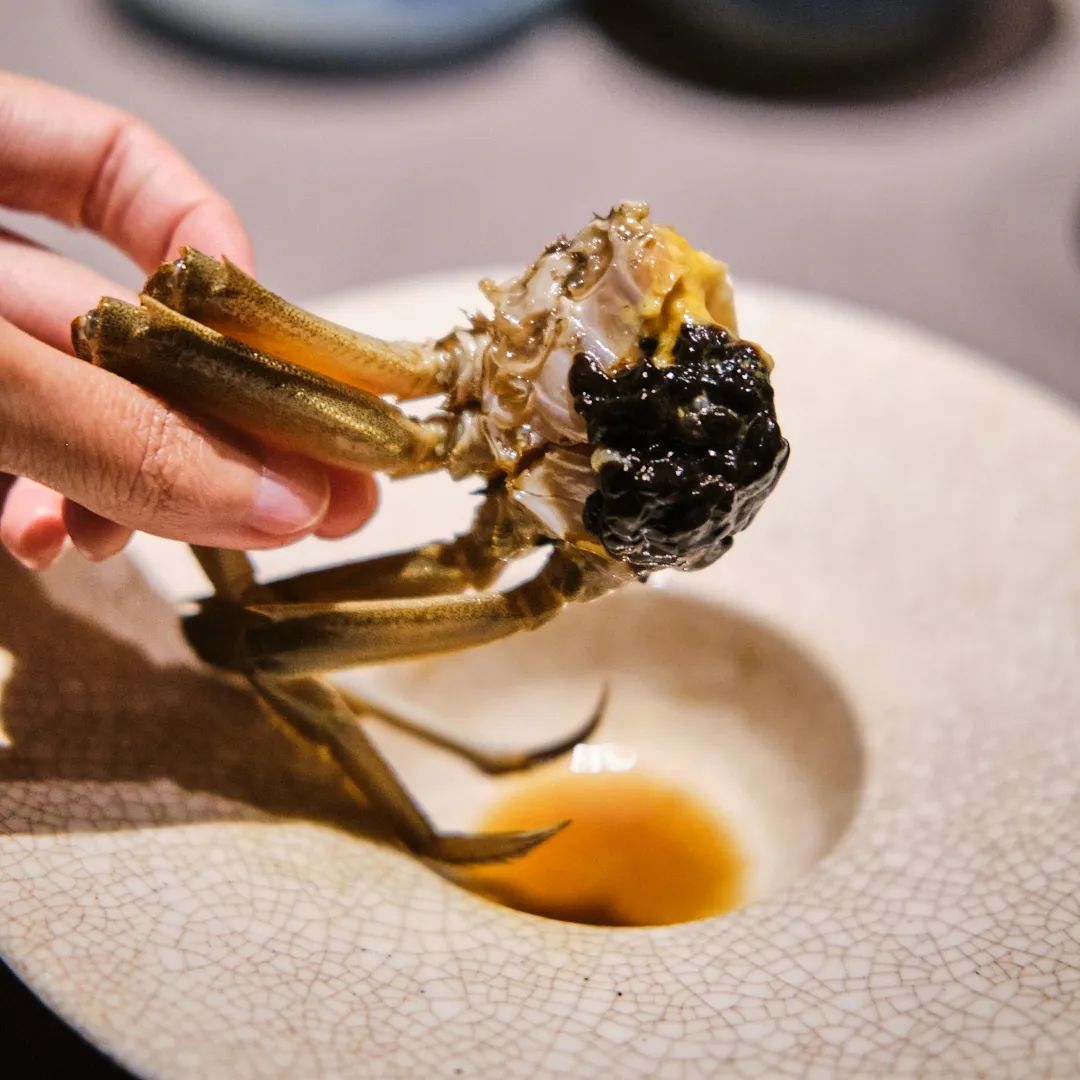
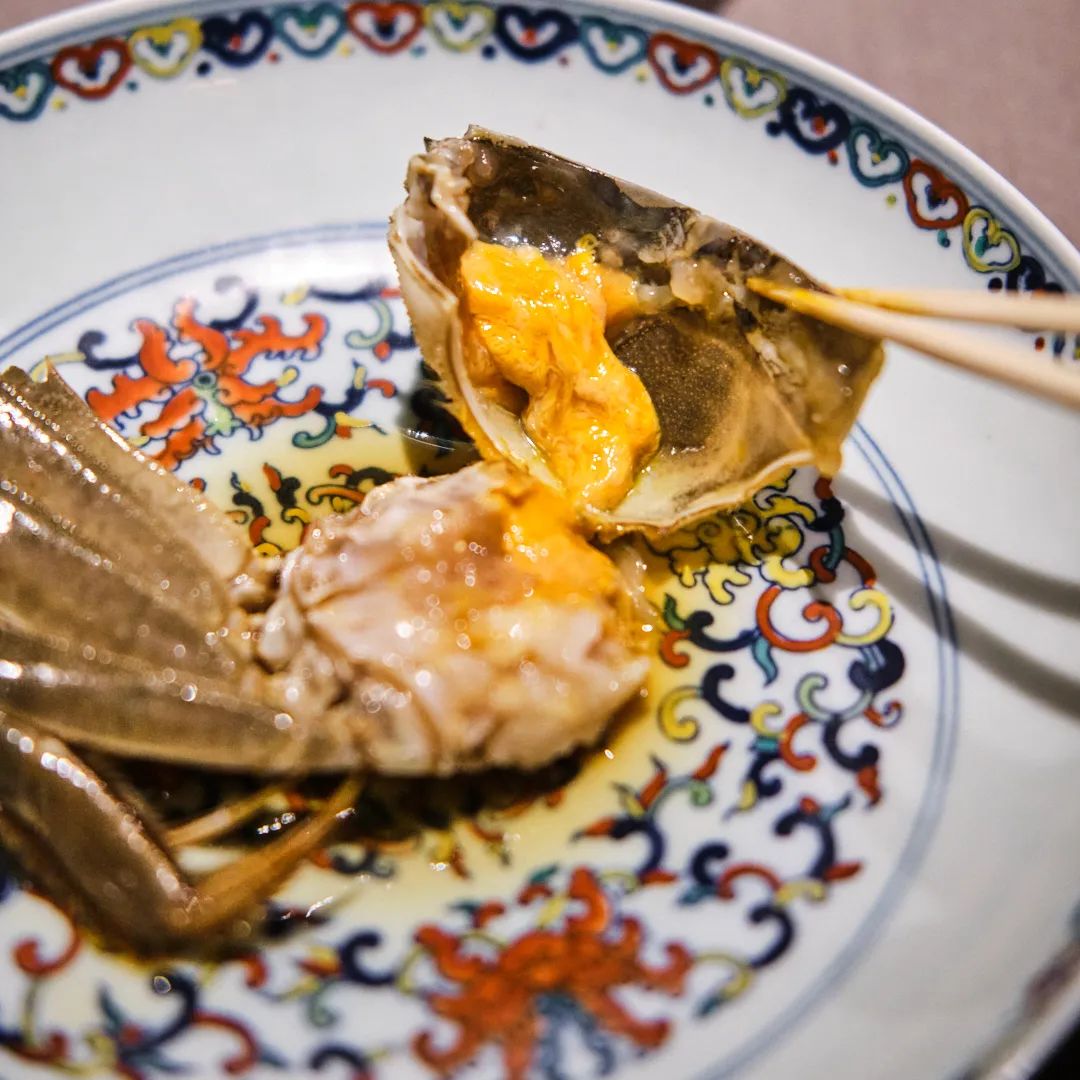
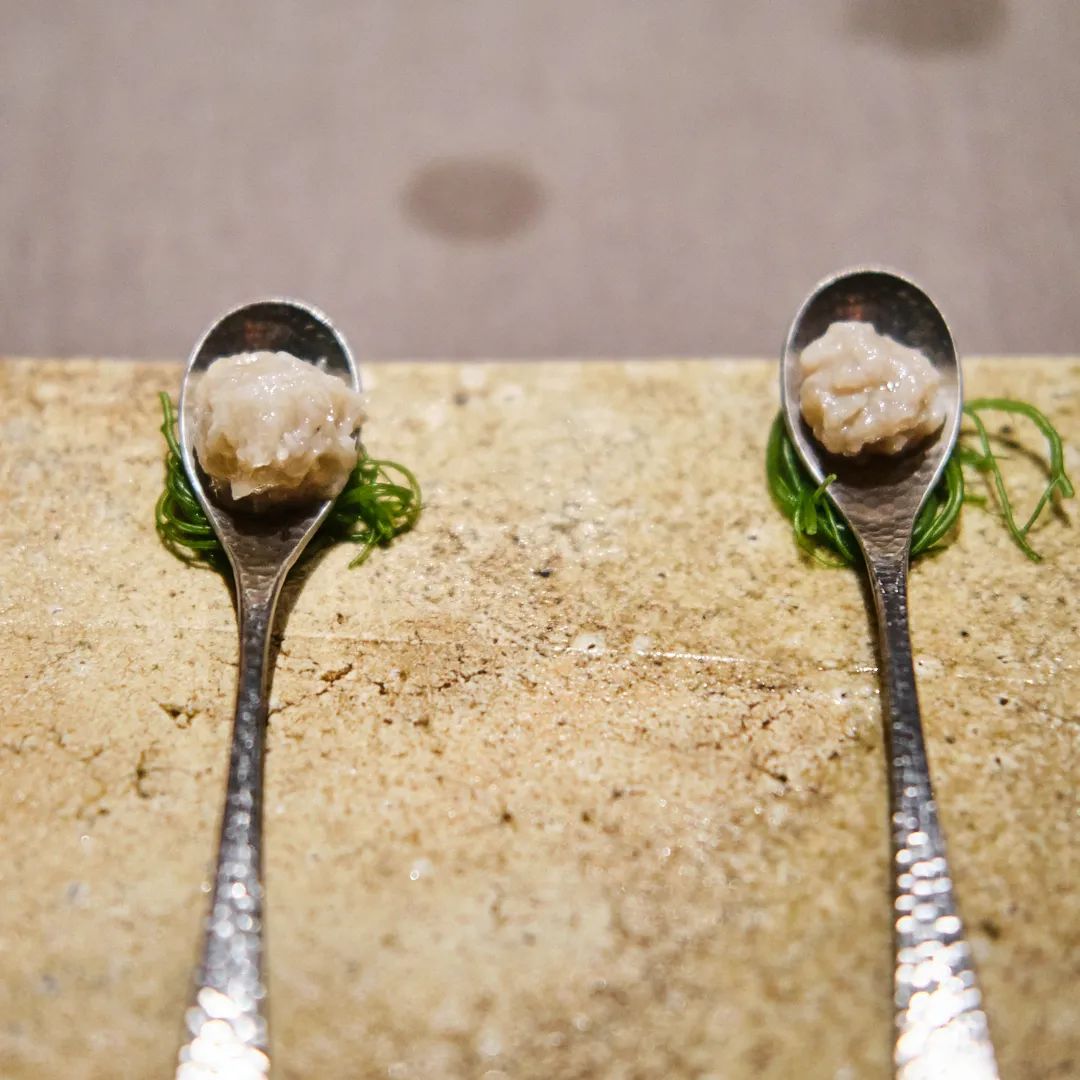
It was usually all about crab in this season, but Chef Kawada treated us a special pork dish – Sliced Pork with Aubergine, based on a classic Sichuan cold plate sliced pork belly with garlic sauce. Chef Kawada’s version was steamed and served hot on the contrary, whose plating was like a work of art, with layers of aubergine underneath the sliced pork to cut through the richness. Chef mentioned that he had tried many different vegetables and found aubergines to be the most suitable. He made Sichuan soy sauce and red chili oil himself and pre-heated garlic to reduce its spiciness. Compared to the traditional version where pork is completely soaked in chili oil, here it was moderately blended into the sauce so that the lighter flavours can be more acceptable to a wider range of diners. Rich but not overwhelming, this was a unique dish from Chef Kawada who has mastered the essence of seasoning.
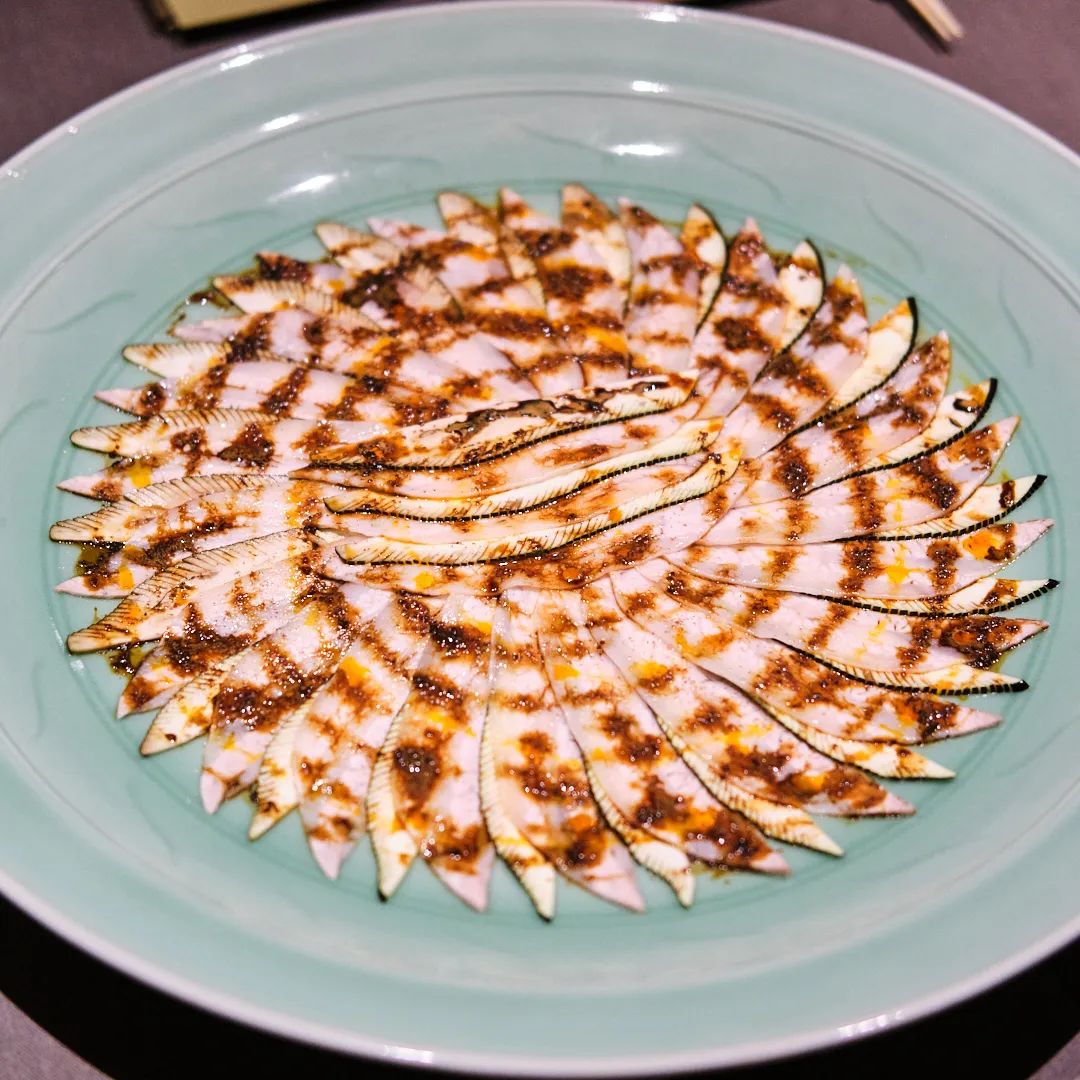
Each heavy dish at Sazenka is balanced by a lighter one. The Ice Fish with Rice Noodles was a cold noodle dish, and Wonton in Pheasant Clear Soup was the interlude. One of the highlights of the meal was the Spicy Chicken Wings stuffed with suppon (soft-shelled turtle) and shark fin, a variation on the spicy diced chicken. When it arrived, we could immediately smell the deliciously spicy aroma wafting from the dish. The soft-shelled turtle had a similar texture to chicken and because it had been simmered in high stock before being deep fried, it came with an intense flavour, a crispy skin and a juicy bite. Banana leaves were provided on the side so we can use it to hold the wing while we devour into it. The dish was so juicy and flavorful that we almost couldn’t find any word to describe such a state of peace and indulgence.
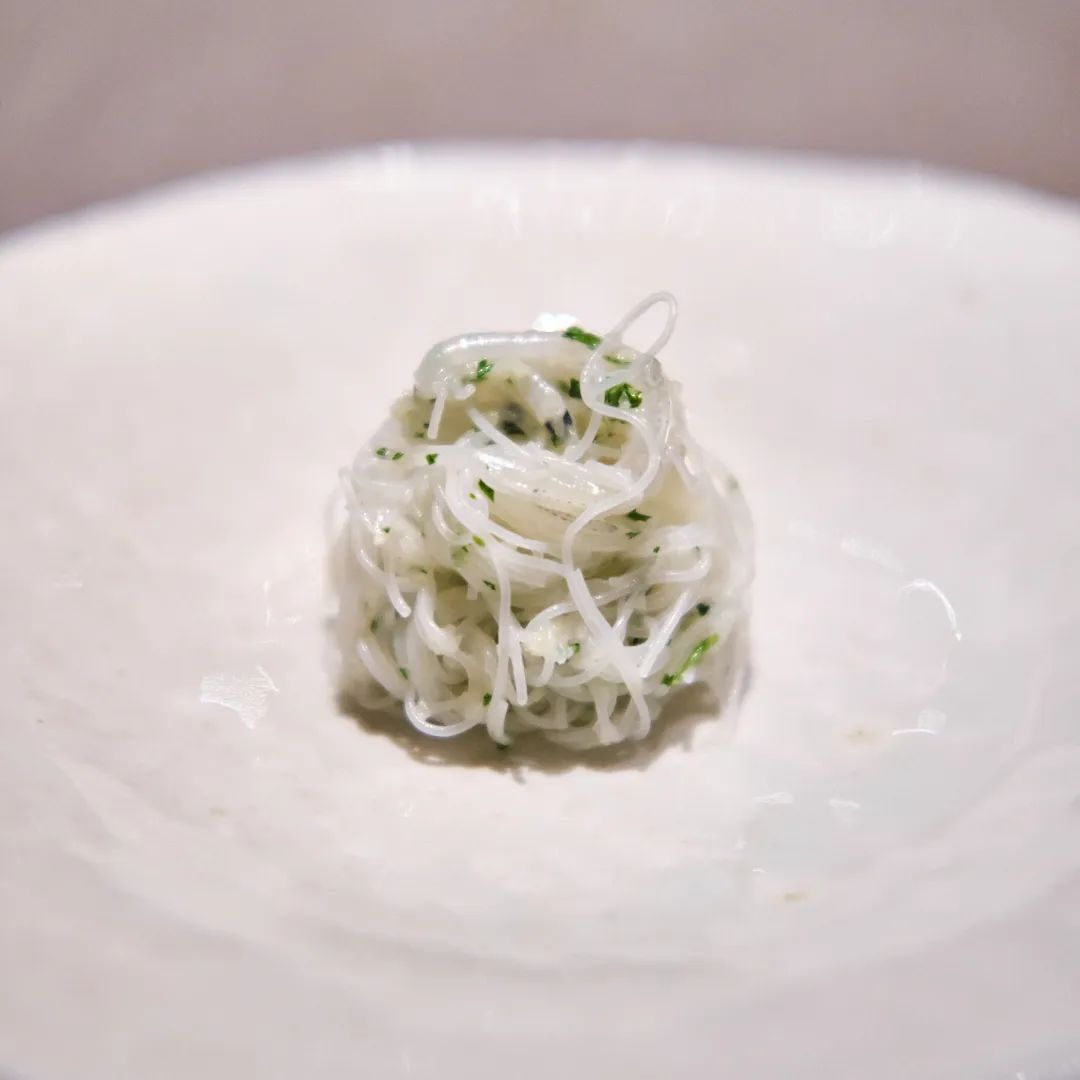
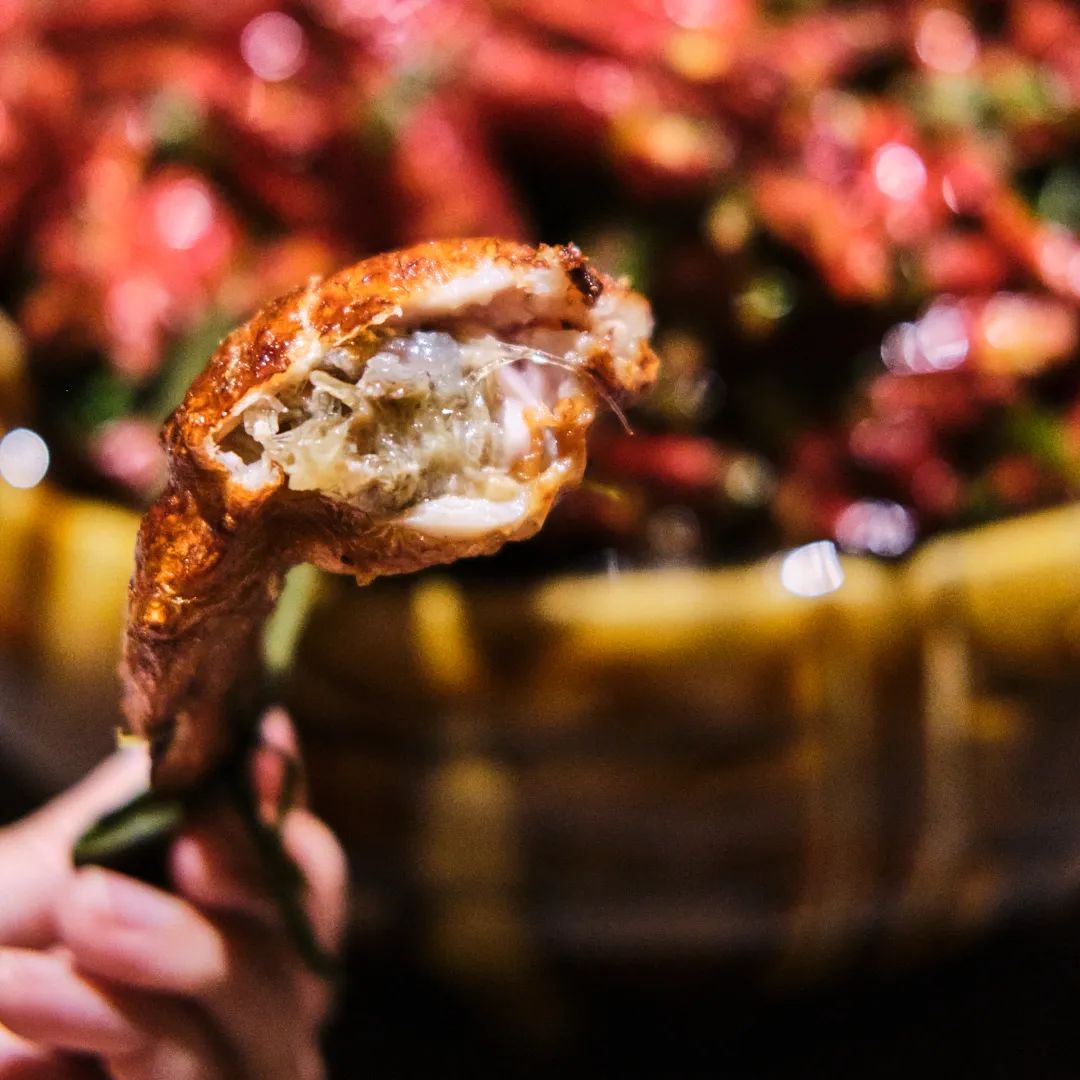
Steamed Hairy Crab was lavishly layered with male crab roe, female crab roe and crab meat, elevated by a dash of Zhenjiang vinegar. Simply cooked to perfection! Many Chinese restaurants overseas love to use Italian balsamic vinegar, but a Chinese dish is more Chinese when you use Chinese flavouring; in this case, Zhenjiang vinegar gives enough acidity to better enhance the crab roe.
The Hairy Crab Roe Sauce with Shark Fin were made using sustainable shark fins, meaning the sharks are fished sustainably and the whole sharks are consumed not just their fins. The gelatinous shark's fins were simmered to perfection with a mellow, delicious aroma lingering. Next up was an off menu dish, Hairy Crab Roe Rice with White Truffle, which had a distinctive grainy texture and the white Alba truffle was freshly shaved. Beautiful autumn vibes!
Fried Turnip Cake featured a high proportion of white turnip which was incredibly sweet and juicy. It may look plain, but the cake was neatly shaped and fried which requires solid techniques.
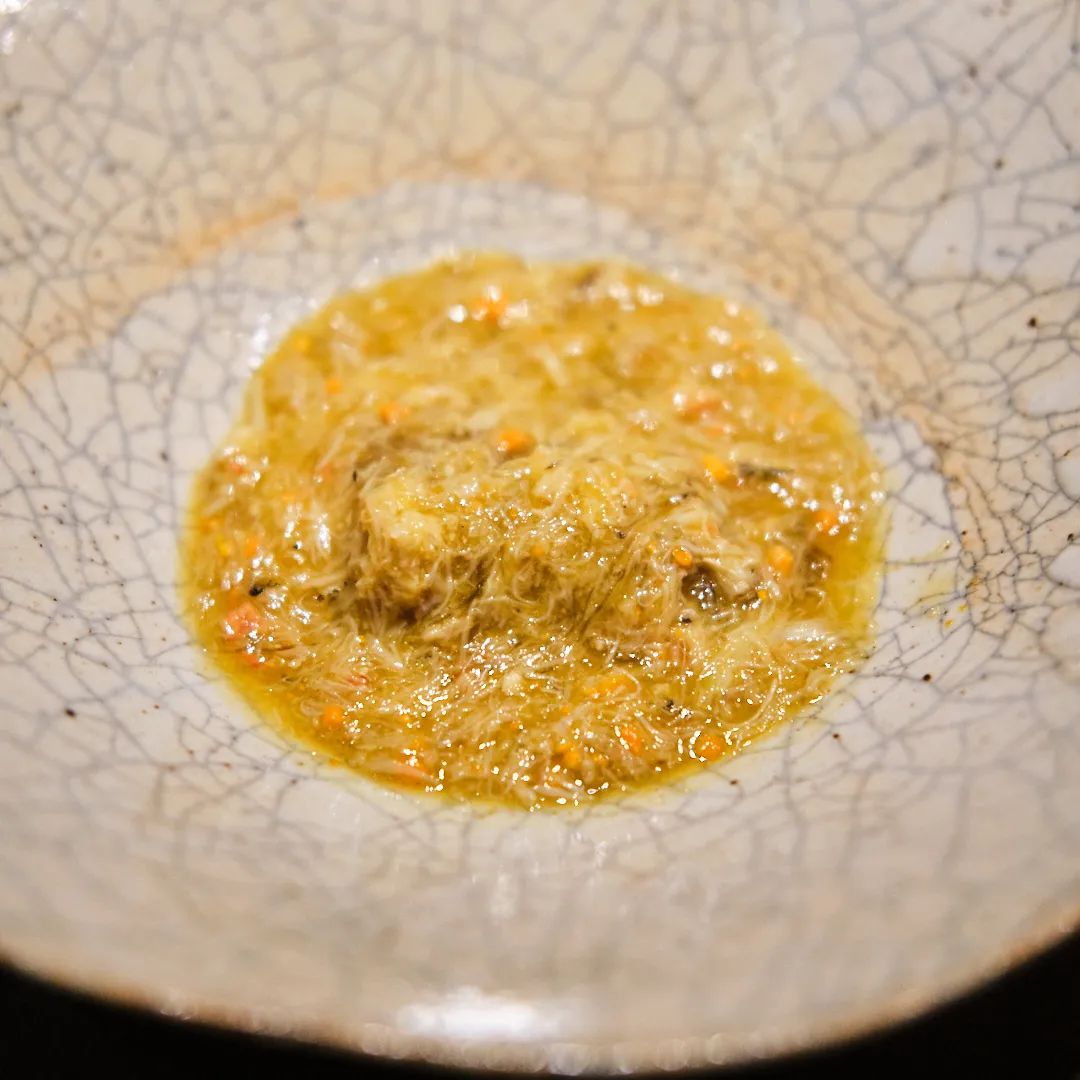
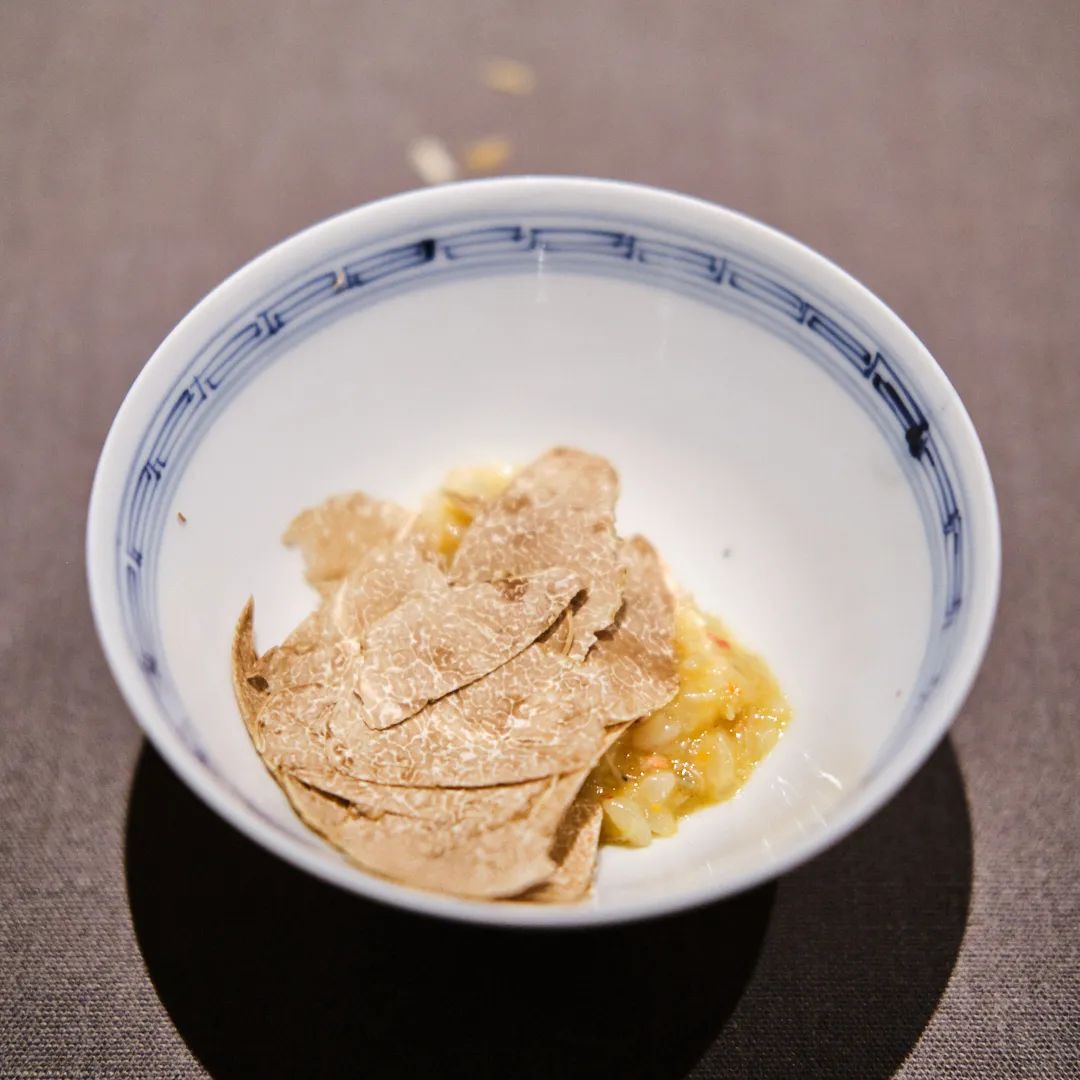
The signature Pigeon was served in three different flavours and parts. The whole table was so busy savouring it and almost had no time to talk. The leg was seasoned with Chinese five-spices and repeatedly fried; the breast was smoked with Maqaw-mountain peppercorn and then grilled over Japanese binchotan; and lastly the head with the brain exposed. The dish was served three times, with all parts being served at their best. I wonder how many restaurants would voluntarily add difficulty to serving a dish for excellence in flavour. The flavour, the texture, the aroma and the temperature were sublime memories that will stay with me for a long time.
Finally, the head of the pigeon was so crispy that it melted in the mouth, and I ate it until only the beak was left, including the exposed brain. At that moment, I thought of the ortolan, a tiny songbird (now a protected animal) that gourmands, including former French President François Mitterrand, used to covet, consuming the head, bones and body in a single, steaming mouthful, while covering their faces with a white napkin to conceal the act. I didn’t want to conceal my covet for the delicious pigeon that night, because I couldn't resist the beauty of such pristine and rustic form of life, and it would be a waste not to finish eating it. Sazenka is also a Michelin Green Star winner for using ingredients sustainably.
The next was Mapo Tofu served with a pot of cooked rice. When you lift up the pot lid, the aroma of the rice was so captivating and the tofu was so flavourful. This is a dish that changed Chef Kawada’s life! Once in Chengdu , I asked Sichuan cuisine master Peng Ziyu “ What’s the best Mapo tofu should be tasted like ? “ “ With rice “ He said .
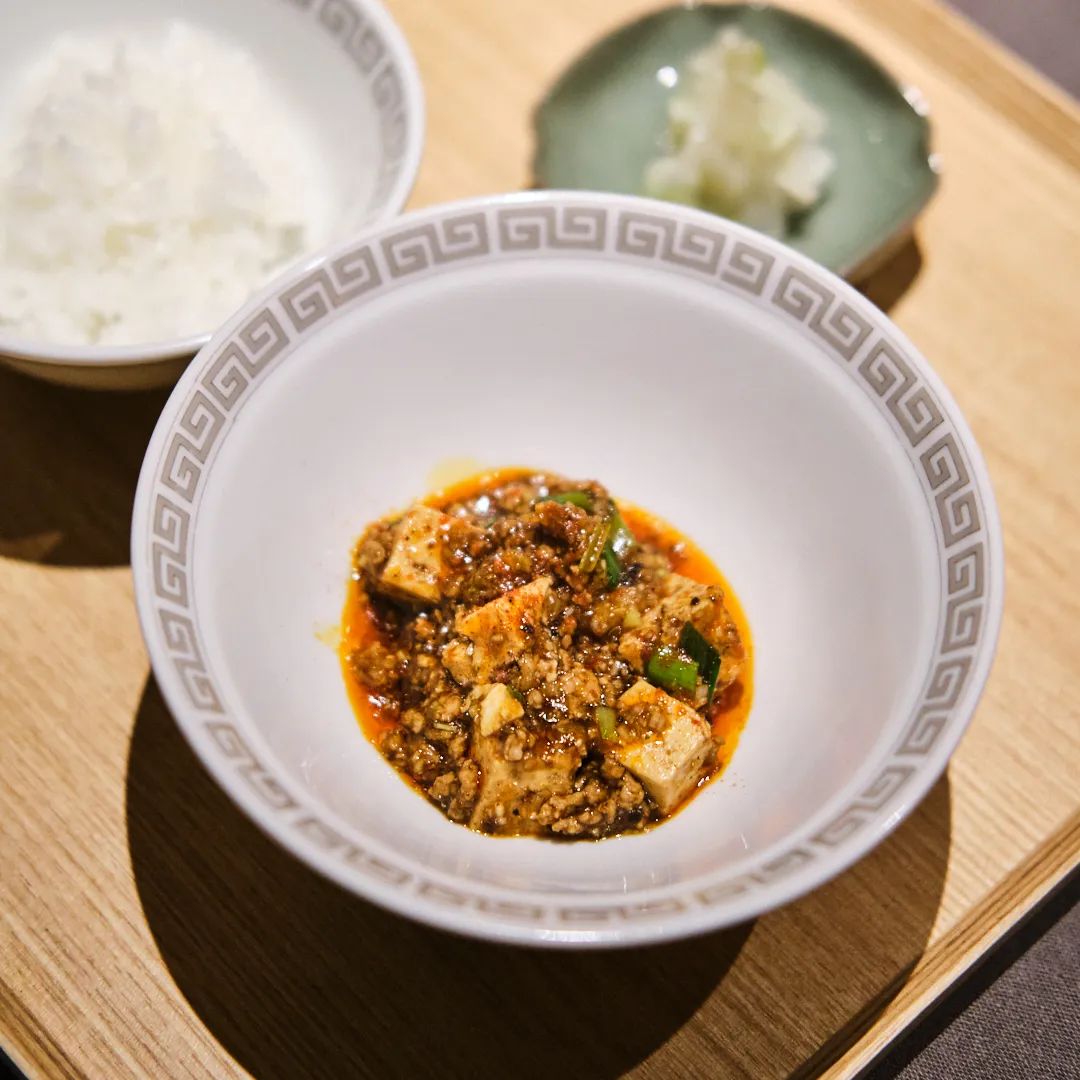
Egg Noodles with Hairy Crab XO Sauce echoes with the somen noodles at the beginning of the meal. Clear soup was made using high-level techniques commonly seen at traditional Sichuan banquets, and it was airy and translucent.
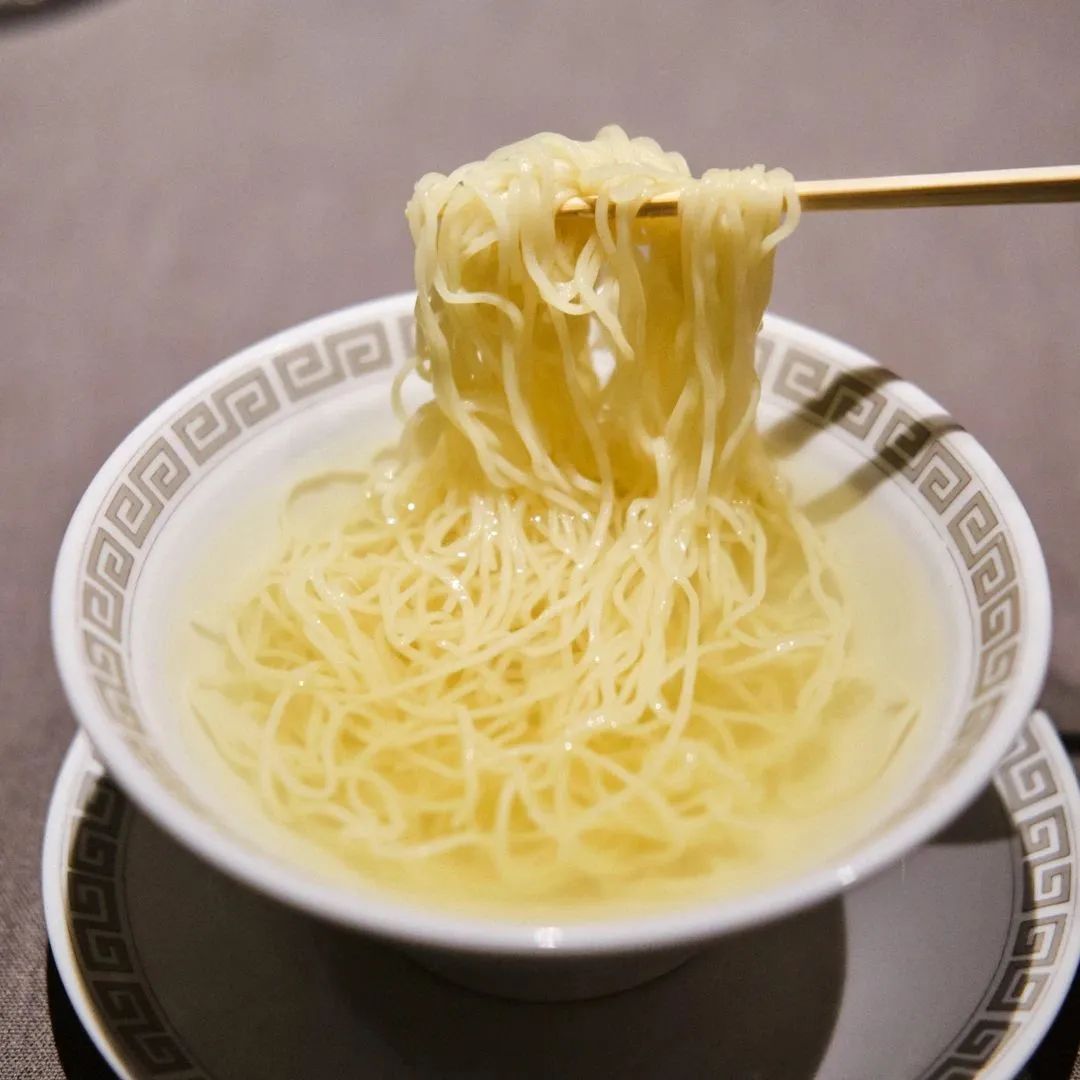
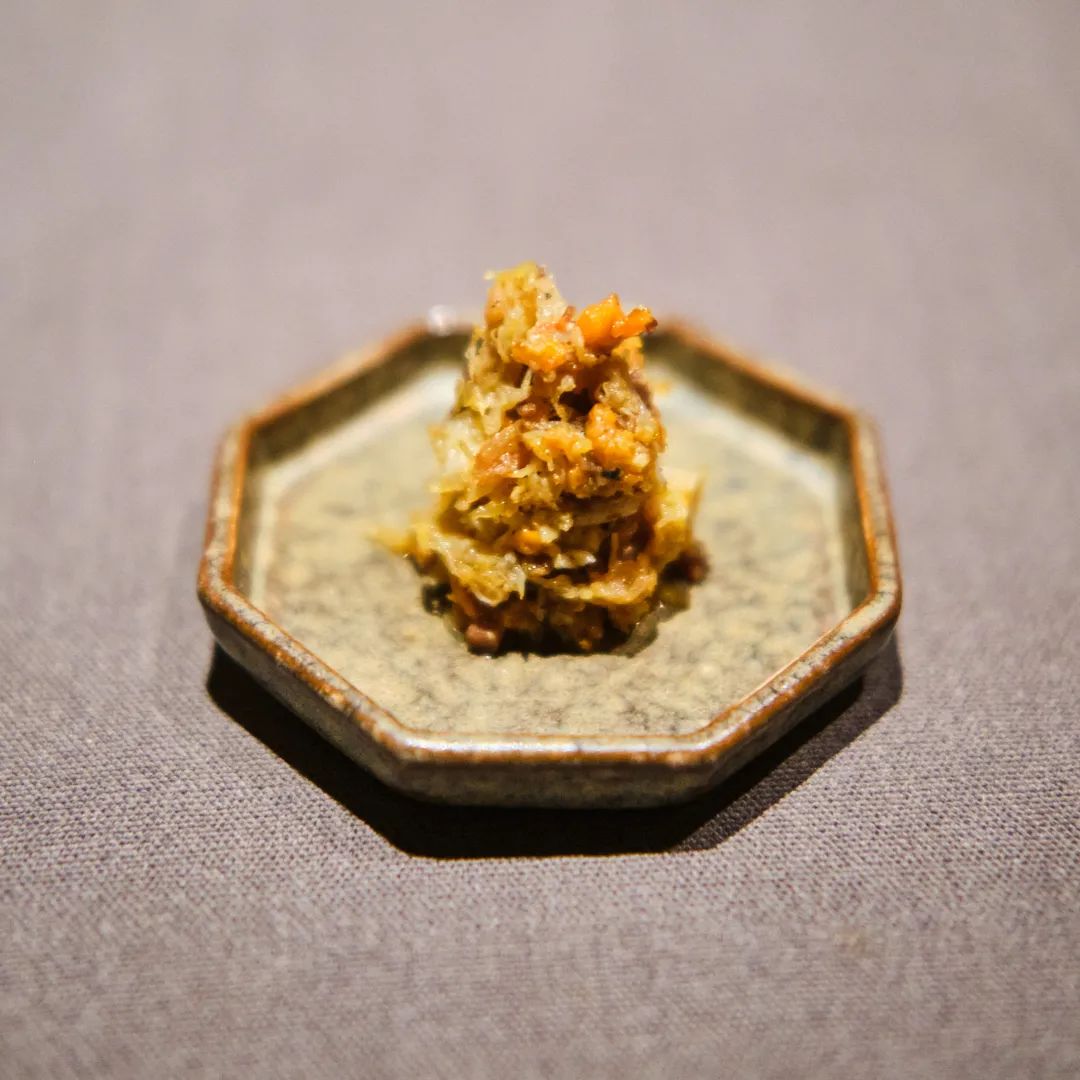
The dessert was Figs with Sesame Ice Cream with homemade fig jam, naturally harmonious and delicious. Tofu made from apricots served in almond tea was presented in hot and cold forms. The cold version was more like jelly and the hot version was creamier, showcasing the change of texture in one ingredient. The meal was finished off with Sweet Glutinous Dumpling with White Sesame.
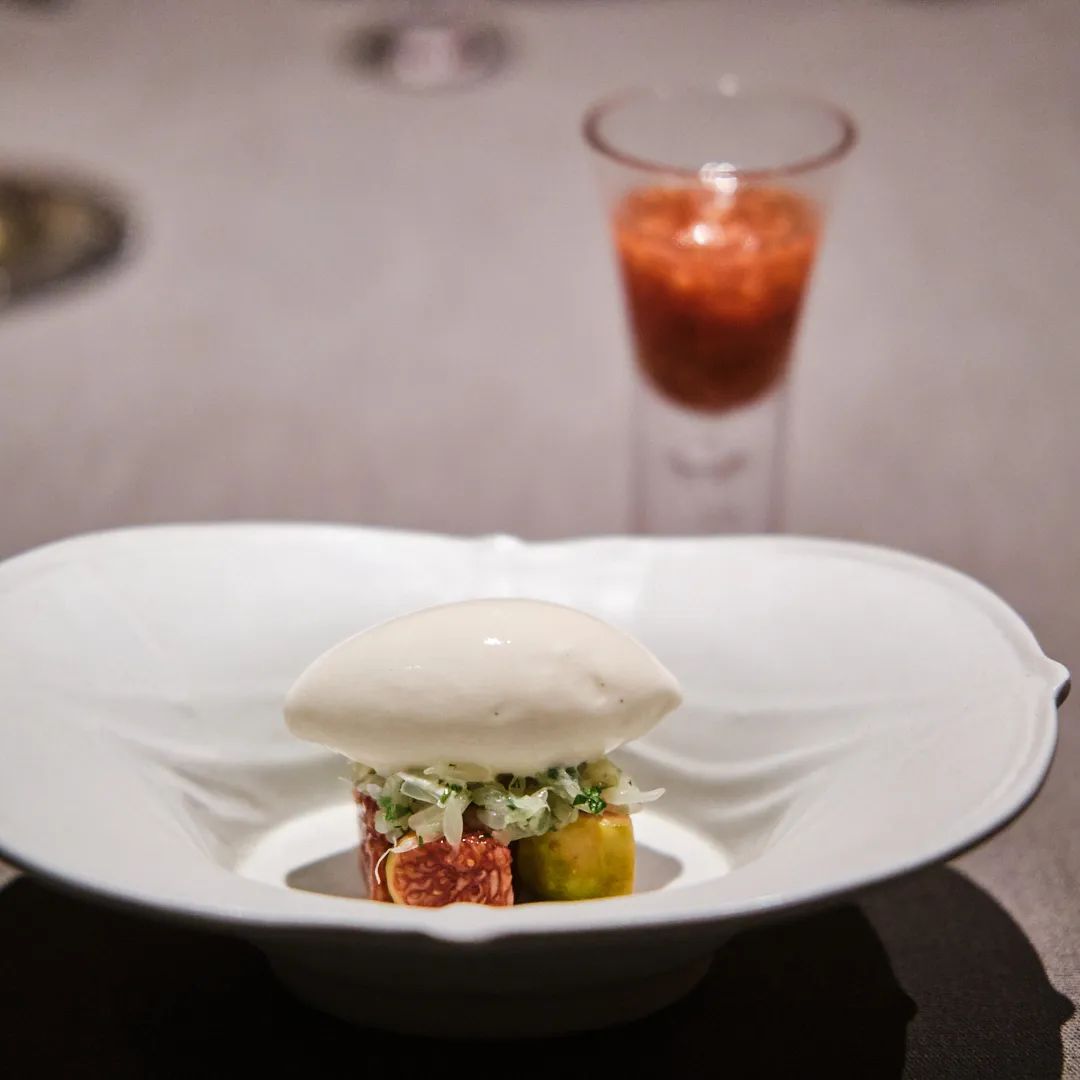
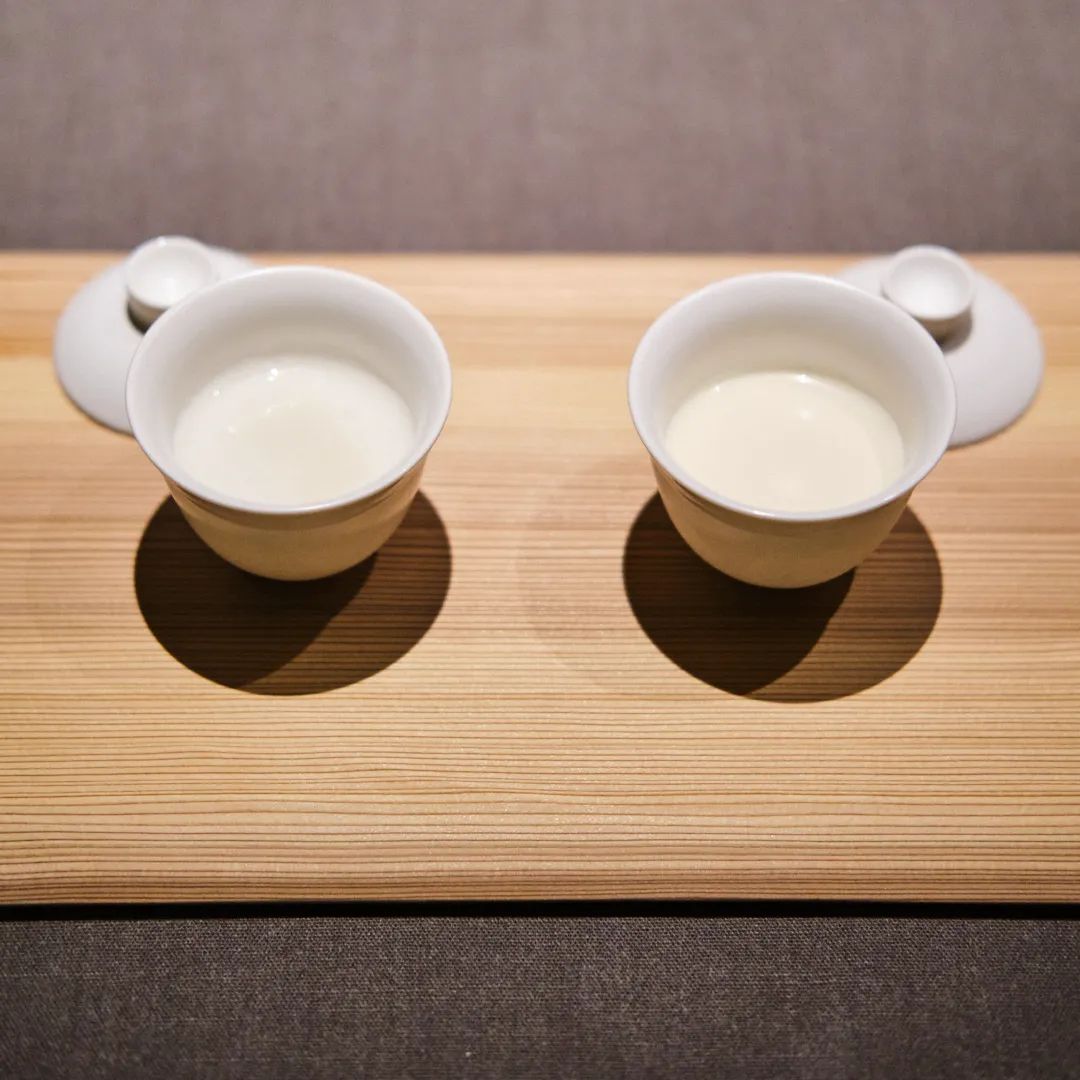
The meal brought a sense of satisfaction that could only be achieved by adding several restaurants together. It was hard for me to put down my chopsticks even when I was already full because my mind still craved for more.
I asked Chef why he chose to train at Ryugin if he wanted to learn Chinese cuisine. Kawada said he wanted to create Chinese dishes that the Japanese would love, and that Ryugin's emphasis on cooking with fire, especially frying and grilling techniques, is similar to Chinese cuisine. The congratulatory bouquet sent from the iconic chef Seiji Yamamoto was placed at the entrance, demonstrating the deep bond between master and disciple.
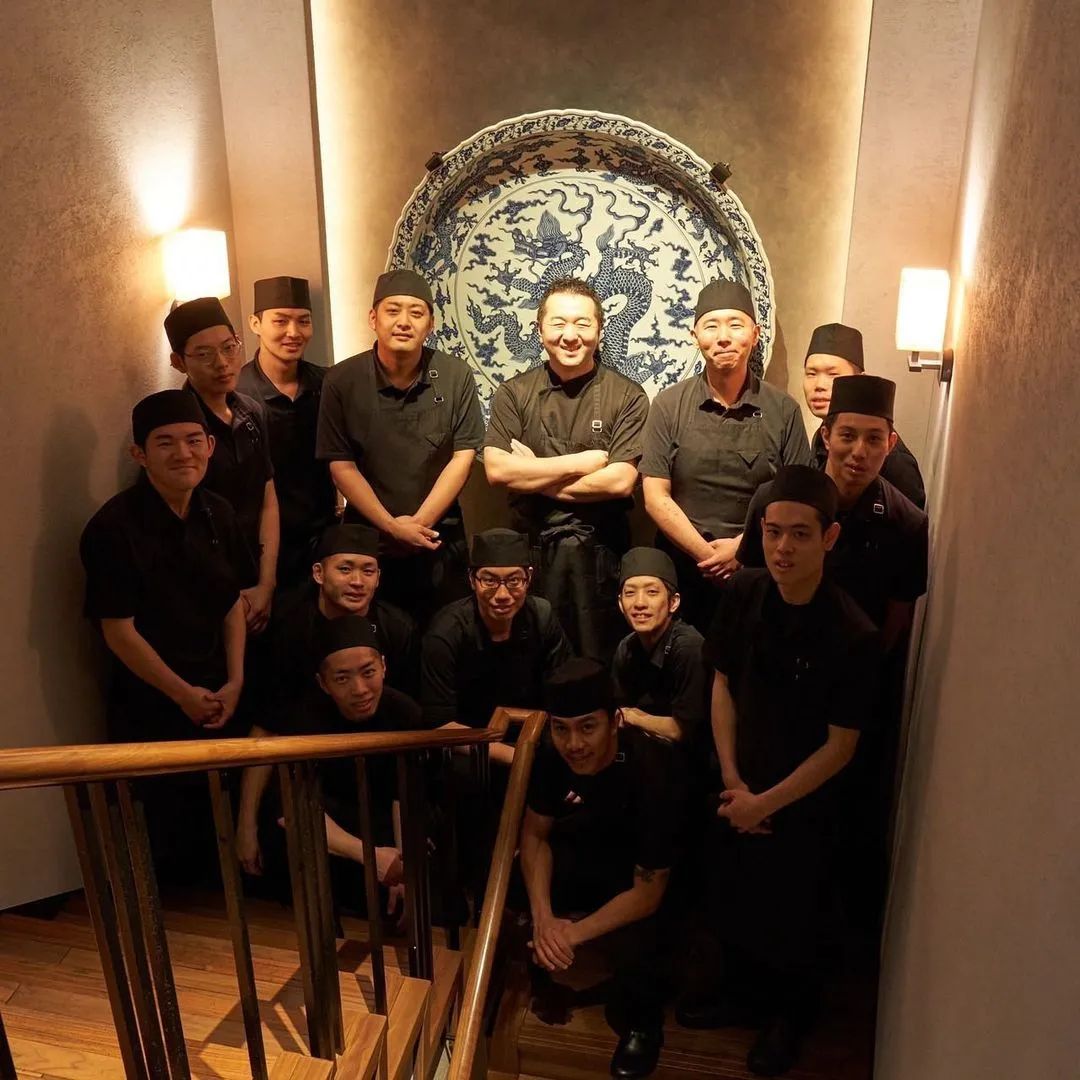 Chef Kawada(Middle)@sazenka_instagram
Chef Kawada(Middle)@sazenka_instagram
Kawada says, Japanese cuisine is about water and Chinese cuisine is about fire. The combination of the two is perfectly interpreted at Sazenka, where Chinese cuisine and kaiseki cuisine meet. He reinterprets Chinese flavours with sublime colours and impeccable aromas, imbued with warm hospitality and authenticity.
Since its opening, Sazenka has been one of the most difficult restaurants in Tokyo to book. Be aware it might take over six months to get a table. Although I had only just left, I said to myself "it would be great if I could visit every season".
Author: Jocelyn 华姐
Photo: Melissa Tse @supertastermel_instagram/ sazenka_instagram/Jocelyn华姐

